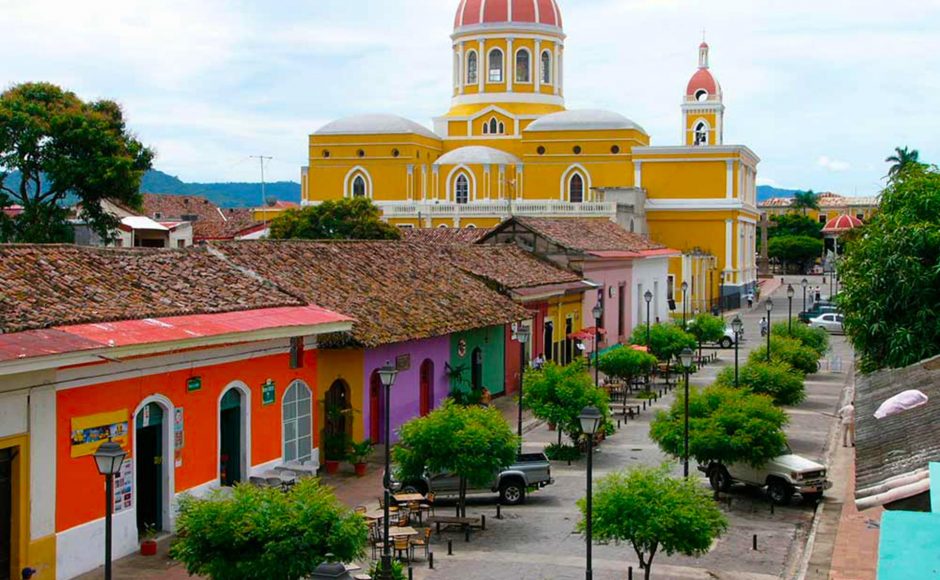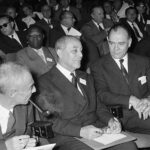Nestled along the shores of Lake Nicaragua, Granada is a vibrant city brimming with history and charm. This picturesque destination stands as one of the oldest cities in the Americas, offering a unique blend of colonial architecture, rich culture, and breathtaking natural beauty. From its colorful streets to its historic landmarks, Granada invites visitors on a journey through time.
As you stroll through its cobblestone streets lined with pastel-colored buildings, each corner reveals stories from another era. The city’s fascinating past stretches back centuries—before European contact and deep into periods of conquest and revolution. Today, it serves not only as a gateway to adventure but also as a testament to resilience and cultural richness that captivates travelers from around the globe.
Join us as we explore the captivating history of Granada Nicaragua—a city where every brick tells a story and every sunset paints an unforgettable backdrop for exploration.
Early History: Pre-Columbian Era
Before the arrival of Europeans, Granada was inhabited by indigenous groups. The most prominent among them were the Nahuatl-speaking tribes. They established a rich cultural tapestry filled with traditions and beliefs.
These early inhabitants thrived in agriculture, utilizing the fertile lands around Lake Nicaragua. Corn, beans, and squash formed their diet. Their settlements showcased impressive craftsmanship through pottery and weaving.
Trade played a vital role in their society. The indigenous peoples exchanged goods with neighboring tribes. This interconnectedness influenced their social structure and culture significantly.
Spirituality was deeply rooted in daily life as well. Rituals honored nature deities, reflecting their respect for the environment surrounding them.
Evidence of these ancient civilizations can still be found today through archaeological sites scattered across the region. Each artifact tells a story about life before European contact—a glimpse into an era that shaped Granada’s identity long ago.
Spanish Conquest and Colonization
The Spanish conquest of Granada, Nicaragua, began in 1524 under the leadership of Francisco Hernández de Córdoba. His expedition marked a pivotal moment for the region. The city was founded on the shores of Lake Nicaragua, strategically positioned for trade and defense.
Spanish colonizers faced fierce resistance from indigenous tribes, notably the Nicarao people. Despite their resilience, many were overwhelmed by superior weaponry and tactics employed by the Spaniards. This conflict led to significant cultural shifts.
As Granada grew, it became an essential administrative center for Spanish rule in Central America. Colonial architecture flourished during this period, leaving behind stunning churches and plazas that still capture visitors’ imaginations today.
The blend of cultures created a unique identity that persists in modern-day Granada. Local traditions reflect this rich history while continuing to evolve amid changing times and influences.
Independence and Revolutionary Period
The quest for independence in Granada, Nicaragua, began to gain momentum in the early 19th century. The people yearned for freedom from Spanish colonial rule. This desire was fueled by broader movements across Latin America.
In 1821, Nicaragua officially declared its independence. However, this newfound freedom didn’t bring peace. Instead, it marked the beginning of internal struggles and conflicts among various factions vying for power.
Granada became a focal point during these turbulent times. Its strategic location made it significant in both trade and military campaigns. As rivalries intensified between Liberals and Conservatives, Granada often found itself at the heart of political turmoil.
Throughout the mid-1800s, chaos reigned as civil wars erupted repeatedly. Despite these challenges, Grenadians demonstrated remarkable resilience, holding onto their cultural identity amid strife and upheaval.
The revolutionary spirit continued to shape Granada’s history well into the late 19th century as citizens sought stability and unity.
Modern-Day Granada: Culture and Attractions
Modern-day Granada, Nicaragua, is a vibrant tapestry woven from rich cultural threads and stunning attractions. The city pulses with life, showcasing colonial architecture that whispers tales of the past.
Visitors can stroll through cobblestone streets lined with brightly painted buildings. Churches like La Merced offer breathtaking views from their bell towers while captivating locals and tourists alike.
Artisans fill markets with handmade crafts, reflecting the city’s creative spirit. Coffee shops buzz with chatter as people savor local brews.
On weekends, traditional music fills the air during lively festivals that celebrate Nicaraguan heritage. Local cuisine tempts palates at every corner—from hearty gallo pinto to sweet tres leches cake.
The nearby Lake Cocibolca invites adventure seekers to kayak or explore its islands. Nature lovers can enjoy hiking trails leading to beautiful vistas and unique wildlife in surrounding areas.
Impact of Tourism on Granada’s Development
Tourism has reshaped Granada Nicaragua in remarkable ways. The influx of visitors has driven economic growth, creating jobs and opportunities for local residents. Small businesses flourish as tourists seek authentic experiences, from artisanal crafts to traditional cuisine.
The historic architecture draws travelers eager to explore the city’s colonial charm. This interest spurs investment in preservation efforts, ensuring that Granada’s rich heritage remains intact for future generations.
As tourism expands, so does the community’s awareness of environmental sustainability. Many initiatives now promote eco-friendly practices, balancing development with nature conservation.
Cultural exchange thrives as locals interact with international guests. Festivals and events celebrate this diversity, enriching Granada’s vibrant atmosphere while fostering mutual understanding among different cultures.
Preservation Efforts of Historic Buildings
Granada, Nicaragua is a city steeped in history, with its vibrant colonial architecture drawing visitors from around the globe. Preservation efforts are crucial for maintaining this charm and protecting cultural heritage.
Local organizations and government initiatives work tirelessly to restore historic buildings. They focus on using traditional methods and materials that reflect the original designs. This dedication helps maintain authenticity while ensuring structural integrity.
Community involvement plays a pivotal role as residents often engage in activities to raise awareness and funds. Workshops educate citizens about the importance of preserving their architectural legacy.
International partnerships also contribute significantly to these efforts, providing expertise and resources necessary for restoration projects. These collaborations foster a sense of global community around Granada’s rich history.
As preservation continues, Granada remains an enchanting destination where every corner tells a story of its past while embracing future possibilities.
Conclusion
Granada, Nicaragua, is a city steeped in history and culture. Each corner tells a story that connects the past with the present.
From its pre-Columbian roots to Spanish colonization, every era has left an indelible mark. The vibrant architecture reflects this rich tapestry of influences.
Today, Granada thrives as a hub for tourism. Visitors flock to admire its colonial charm and engage with local traditions. This influx supports not only the economy but also cultural preservation efforts.
The city’s spirit shines through festivals, cuisine, and art. It serves as a canvas showcasing Nicaraguan identity.
As you explore Granada’s streets or sit by Lake Nicaragua’s shores, you’ll feel the weight of history mingling with modern life. It’s more than just a destination; it’s an experience waiting to unfold for those who venture here.
FAQs
Granada, Nicaragua, has a rich tapestry of history that continues to shape its vibrant culture today. This beautiful city stands as a testament to the resilience and spirit of its people. As time marches on, Granada’s allure only grows stronger.
What is the best time of year to visit Granada, Nicaragua?
The ideal months are December through April when the weather is dry and pleasant for exploring.
Are there any notable festivals in Granada?
Yes! The International Poetry Festival held every February draws poets from all over the world, celebrating literature and creativity.
How can I get around in Granada?
Walking is great for exploring downtown. Bicycles and horse-drawn carriages are also popular options for tourists wanting a more leisurely experience.
What should I not miss while visiting Granada?
Be sure to check out Lake Nicaragua, stroll along Calle la Calzada, and visit historic landmarks like La Merced Church for stunning views.
Is it safe to travel to Granada?
Like many tourist destinations worldwide, it’s essential to stay aware of your surroundings. Most travelers find Grenada welcoming and friendly.
Does Granada have good local cuisine?
Absolutely! Don’t miss trying Gallo Pinto (traditional rice and beans) or Rondon (a delicious seafood stew). Local eateries often serve up authentic flavors that reflect Nicaraguan culture.
With its blend of history, culture, and scenic beauty—Granada remains one of Central America’s hidden gems waiting for you to explore.

















